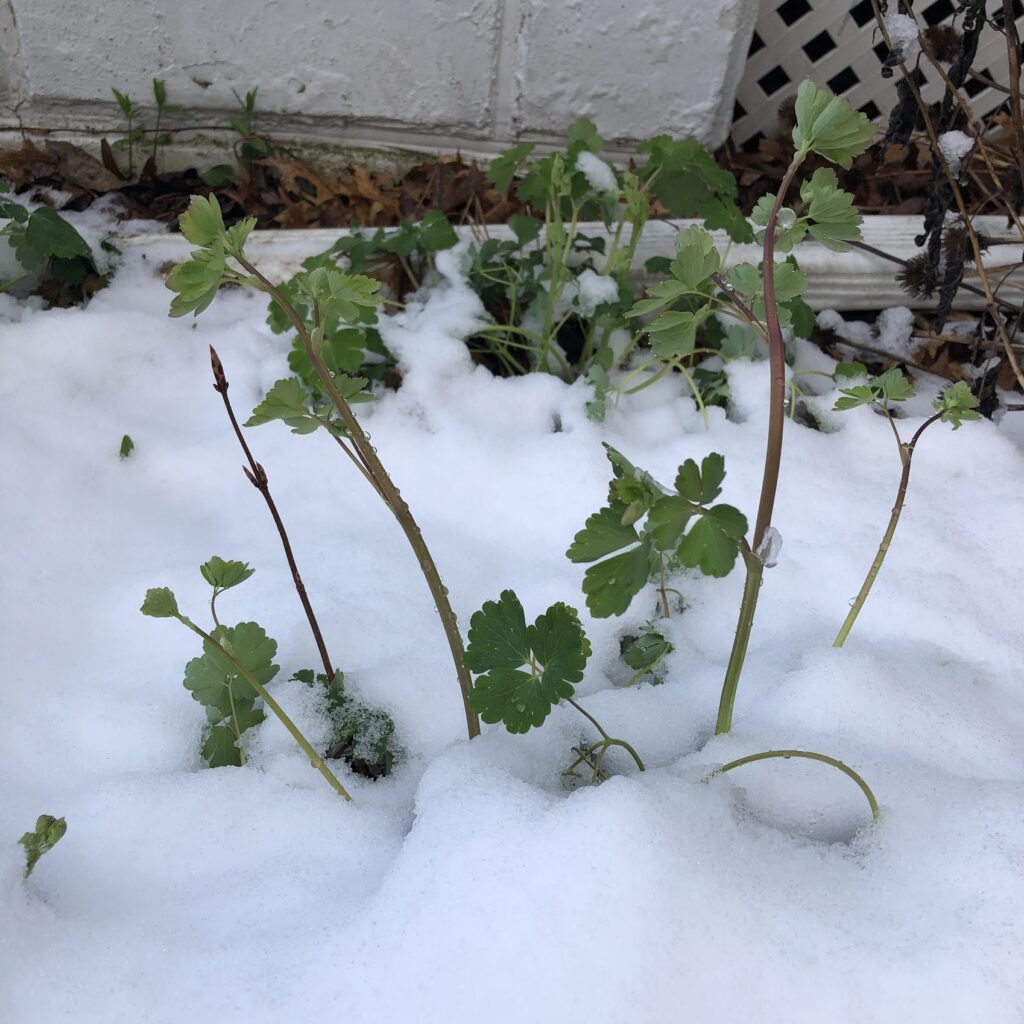Written by Allyson Muth, Director, Center for Private Forests at Penn State
University Park, PA – April 18, 2022 – In the middle of April, we’re experiencing one of the (hopefully) last gasps of winter for the season. While nature can still surprise us – after all, for much of Pennsylvania, the “safe to plant your garden” timing occurs throughout the month of May – the near-term forecast looks like we might get more seasonal weather. We’ve had several surprisingly warm days throughout the winter months. It causes intrigue as to when the trees are going to break bud and when they wait.
Some level of green-up is occurring across the state. Here in central PA we had several of the street tree maples send out their flowers a few weeks ago, and subsequently get burned by frost. The serviceberry in the backyard is all but ready to put its flowers out. In some parts of the southern half of the state, people are talking about seeing leaves on trees. But as the street tree red maples show, there is risk to early bud break, flower set, and leaf break. Later season frosts can kill back those young structures. So how do trees know?
Turns out it is a mix of chilling requirements, growing degree days, and photoperiod. Each species uses some combination of these three to trigger growth.
For all trees that lose their leaves for the cooler months and experience a period of dormancy, there is a minimum temperature that must be experienced for the spring warmth to trigger bud break. This chilling requirement varies according to species, but essentially is a minimum temperature requirement for a set amount of time for the species of trees native to a place. “Native to place” is an important concept as, for example, red maples in the southern US have adapted to a higher minimum winter temperature and earlier spring than their cousins in the northern US. This variation within species and to site is called “plasticity.”
Warm spring temperatures can be an overriding driver of bud break, to an extent. Growing degree days are the days above a certain minimum temperature threshold. Each species requires a certain number of degree days above their temperature threshold to trigger growth. For those who track when trees break bud and, in comparison to historical records, bud break is occurring earlier than it used to in response to warmer spring conditions. Interestingly, there have been studies done in Concord, Massachusetts using the writings of Henry David Thoreau as a record for bud break to compare to today.
Day length, or photoperiod, is a check on the bud break system. Unseasonable warmth, but during the shorter days of early spring, may not trigger growth for those species with strong photoperiod requirements – helping to ensure they don’t get burned by late frosts. The air may be warm, but it’s not quite right, and our native species are regulated somewhat by daylength.
Species that have weak chilling requirements and minimal photoperiod requirements leaf out early, increasing their resources for growth, increasing their distribution and abundance. This is the strategy of many of our successful invasive plant species. The “early green” in Pennsylvania’s forests is triggered by day length and early warmth, giving these invasive plants a competitive strategy against our native species, which have stronger chilling and longer photoperiod requirements.
Bud break, flowers, and leaf out for trees and plants (and events like migration, emergence from hibernation, breeding, dispersal for animals) are part of the science of phenology. Phenology is the study of the annual timing of developmental events. Tracking timing events in your neck of the woods can enhance your understanding of your woods and contribute to larger scientific efforts about the changing natural world.
If you too are intrigued by the cues of nature, consider contributing to the National Phenology Network’s Nature’s Notebook or Project Budburst, and add your nature observations to the larger citizen science efforts.
Every spring, I remind myself to be patient with the trees. While we love to see the flowers and new growth of our native trees, they are more attuned to their site and less responsive to the warmth than we humans seem to be. And that understanding is an important part of our connection with the woods.



